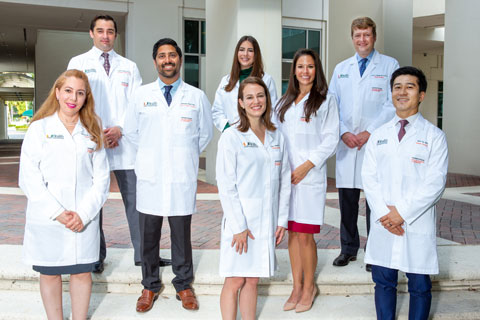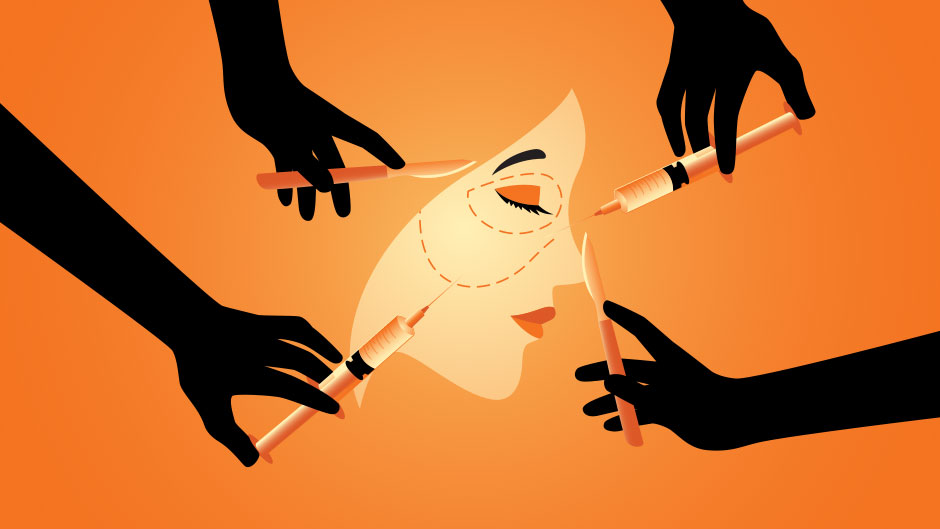They say the camera doesn’t lie, a debatable adage that is prompting a growing number of people who have endured the pandemic by working, learning, and socializing online to buy better versions of themselves.
Board-certified plastic surgeons at the University of Miami and across the nation attribute a growing demand for cosmetic surgeries to the time people spend viewing their unfiltered, real-time images via videoconferencing. Since COVID-19’s emergence 18 months ago, the number of daily participants using the web-conferencing platform Zoom exploded from 10 million to more than 300 million.
“It’s a real phenomenon,” said Dr. Devinder Singh, chief and program director of the Division of Plastic Surgery who joined the University a year ago in part to build a robust aesthetic plastic surgery practice at UHealth and the Miller School of Medicine. “People started seeing themselves, not only more frequently and more close-up, but also from different angles, with bad lighting and in animation. That change, from static photos filtered on social media to moving images, made people see expressions and asymmetries that they might not have noticed before. And it caused them to pick up the phone and call a plastic surgeon.”

Singh, who specializes in aesthetics and breast reconstruction—and has performed cleft palate surgeries on mission trips around the world—measures the uptick by noting he performed three nose jobs last month. But the latest survey of members of the American Academy of Facial and Reconstructive Surgery (AAFPRS) confirmed statistically what Singh sees anecdotally. Seventy percent of AAFPRS surgeons reported an increase in bookings and treatments over the course of the COVID-19 pandemic, most notably for nose jobs, face-lifts, eye lifts, and neck lifts.
At the same time, they reported a corresponding decline—for the first time in years—in the use of non-invasive procedures, like fillers and skin treatments. Not incidentally, the AAFPRS initially identified an increasing demand for facial procedures in 2013, which members attributed to patients seeking to look better in their selfies and social media profiles. But as the academy has noted, videoconferencing lends itself to harsher self-scrutiny than selfies and video-editing apps like TikTok, which have more appearance-enhancing capabilities.
How COVID-19 disrupted our lives is another major contributing factor in the surging demand. With social distancing and work-from-home policies in place, people have the time, flexibility, and privacy to recover from a procedure. By spending less on recreation and entertainment, many also have more disposable income to spend on themselves.
“That’s definitely a huge part of it,” Singh said. “You’re at home. You’re not taking vacations or socializing. And if you do go out, you can wear a mask to cover your face during the recovery period. So instead of putting your money toward a Disney cruise—because there were none—you put your money towards a face-lift.”
While others call the videconferencing-induced preoccupation with appearance “Zoom dysmorphia,” Singh cautions against equating it with body dysmorphia, a mental health disorder that can cause significant distress and impairment. Sufferers are often so embarrassed or anxious about their perceived flaws, they avoid social situations.
“You shouldn’t conflate properly indicated aesthetic surgery, which can really help improve a patient’s confidence, self-image, and quality of life, with people who have mental health issues,” he said. “Qualified plastic surgeons are trained to identify people with body dysmorphic disorder, and they are a very small subset of patients that present to our office. We look for those people. We screen them out, and we will not take their money. That’s what separates professional, highly trained, reputable plastic surgeons from those who call themselves cosmetic surgeons, but don’t have the proper education, training, and certification.”
Now, as life resumes some normalcy, Singh doesn’t expect either the surge in cosmetic procedures, nor the number of unqualified cosmetic surgeons offering to perform them, to decline. That’s especially true in Miami, which he described as a global capital for aesthetics.
“It’s always been a hot spot because the weather is great, people wear less clothes, and are more interested in the way they look. But it’s really an exploding industry here in South Florida,” he said. “Social media has really fueled what you could call a micro-tourism market, where people from all over the United States travel to Miami for aesthetic surgery.”
And that, in part, is fueling rapid growth in clinical activity at the Division of Plastic Surgery. Since his arrival a year ago from Anne Arundel Medical Center in Annapolis, Maryland, where he was chief and medical director of plastic surgery, and chaired the state board of physicians, Singh has doubled the plastic surgery faculty from five to 10. Among his recruits are noted craniofacial, microvascular, gender-affirming, and hand surgeons, as well as experts in new surgical treatments for lymphedema, which usually affects post-cancer patients who have had their lymph nodes removed.
But like Singh, whose practice is about 75 percent reconstruction surgery for medical reasons and 25 percent cosmetic surgery for aesthetic reasons, they’ll also perform cosmetic surgeries.
“A lot of people, including my mother, assume that plastic surgeons at universities only do reconstruction and the private practice people only do cosmetic,” he said. “But the majority of board-certified plastic surgeons have blended practices, which means at the University of Miami you know you’ll get highly trained experts who bring quality, safety, and professionalism to the operating table. And that’s not always the case if you find your surgeon on Instagram or TikTok.”

